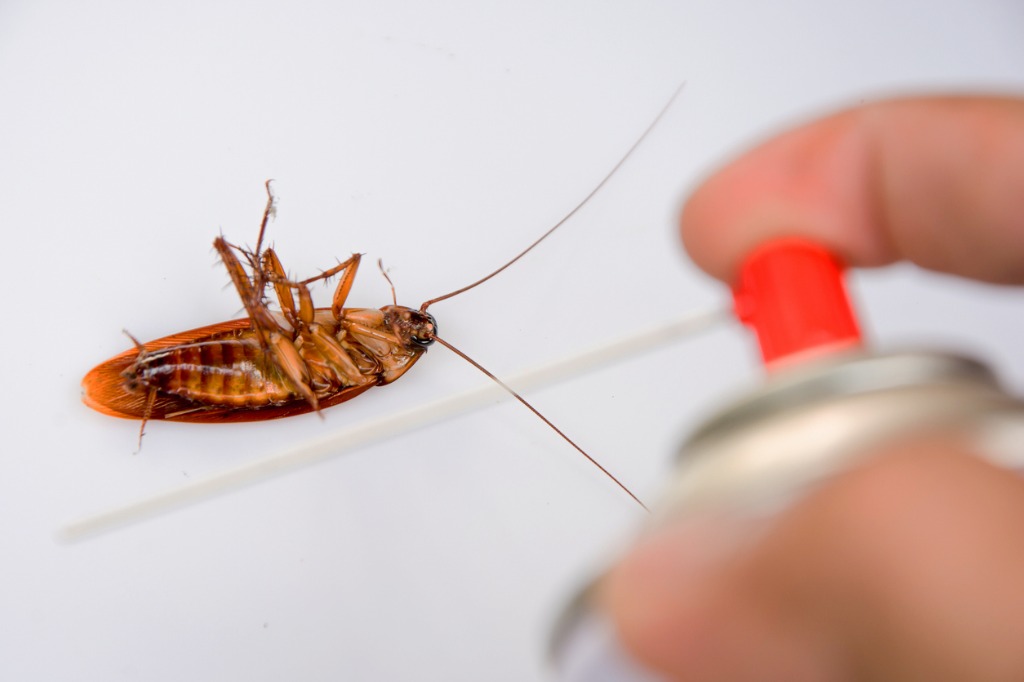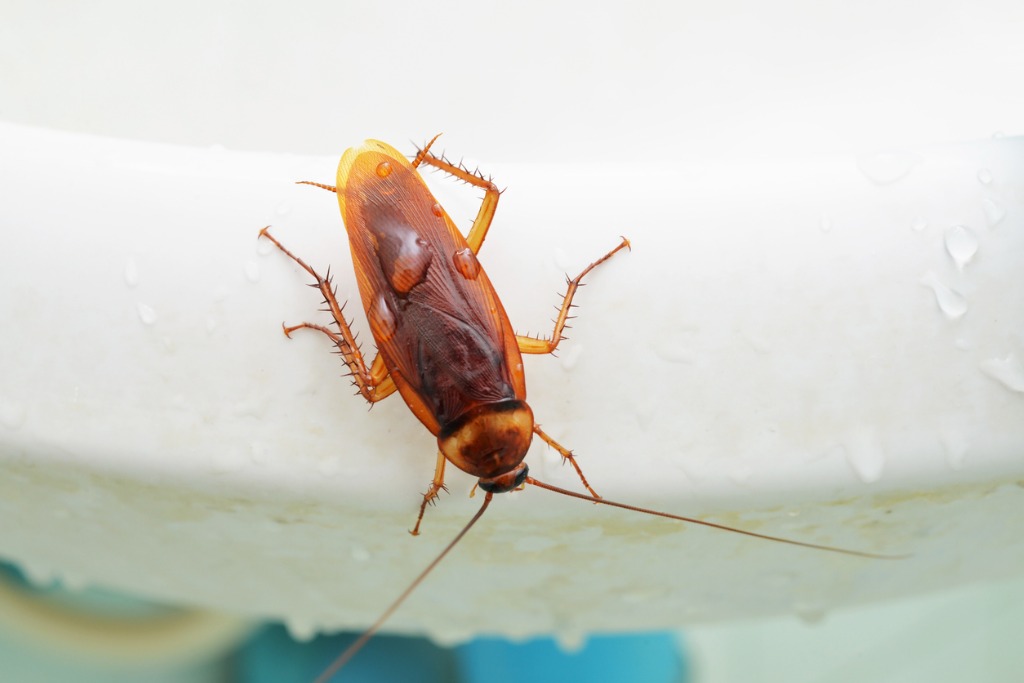Cockroach infestations are a widespread concern that many homeowners and businesses encounter, bringing with them not only a sense of disgust but also potential health risks due to their ability to spread bacteria and allergens. Prevention is paramount; it’s not just about maintaining cleanliness and aesthetics but also ensuring the safety and well-being of inhabitants. Proactively guarding against these resilient pests is far more effective and less distressing than trying to eliminate them once they’ve settled in.
Key takeaways
- Proper food storage prevents cockroach attraction.
- Regular cleaning routines deter infestations.
- Understand cockroach basics and their preferences.
- Cockroaches pose health risks, so prevention is crucial.
- Seal entry points, manage waste, and maintain landscapes.
- Use non-chemical methods first, resort to chemicals if needed.
How does proper food storage contribute to cockroach prevention?
Proper food storage plays a pivotal role in cockroach prevention. Cockroaches are primarily driven by their search for food, and by securely storing food items, we can significantly reduce the attraction for these pests. Using airtight containers, promptly cleaning up spills and crumbs, and regularly emptying trash bins ensure that roaches do not have easy access to food sources. Without this allure, homes and businesses become less hospitable to these pests, greatly diminishing the likelihood of an infestation.
How can regular cleaning routines deter cockroach infestations?

Regular cleaning routines act as a frontline defense against cockroach infestations. Cockroaches are attracted to residues and leftovers, whether it’s a dropped crumb, spilled liquid, or unwashed dishes. By maintaining a consistent cleaning regimen—sweeping and mopping floors, wiping down counters, and promptly cleaning dishes and appliances—we eliminate these attractants. Additionally, frequent cleaning brings with it the advantage of early detection, allowing one to notice and address signs of an infestation, like droppings or egg cases, before it grows out of control. In essence, a clean environment is both a deterrent to roaches and a proactive measure to catch potential problems early on.
Understand the Enemy: Cockroach Basics
Understanding cockroaches is crucial in combating their presence. Commonly found in homes are species like the German, American, and Oriental cockroaches. These pests have varying lifespans, but on average, they can live for several months, and some species can even last up to a couple of years. They are prolific breeders; for instance, a female German cockroach can produce up to several thousand offspring in her lifetime. Cockroaches thrive in warm, moist environments, often seeking out cracks, crevices, and dark spaces close to food and water sources. Their preference for these conditions makes areas like kitchens, bathrooms, and basements especially vulnerable to infestations.
The Risks: Why You Should Be Concerned
The risks associated with cockroach infestations extend far beyond mere discomfort or revulsion. These pests pose significant health threats; their droppings, shed skins, and general presence can trigger allergies and asthma attacks, particularly in vulnerable individuals. Cockroaches are also notorious for being carriers of numerous pathogens, capable of transmitting diseases like salmonella, E. coli, and other gastrointestinal disorders. In addition to health risks, they can cause damage to personal property by contaminating food and staining surfaces. Beyond the tangible, the mere knowledge of sharing one’s space with these insects can lead to anxiety and distress, exacerbating the “yuck” factor and intensifying the psychological ramifications of an infestation.
Primary Prevention Methods: Keeping Roaches Out

1. Seal Entry Points:
- Windows and Doors: Install tight-fitting screens and weather strips. Ensure that gaps and spaces in and around windows and doors are sealed, preventing cockroach entry.
- Cracks and Crevices: Regularly inspect your home for any cracks or crevices, especially in foundational structures and walls. Use caulk or other sealants to address these vulnerabilities.
- Utility Lines and Pipe Entry Points: Areas where utilities enter the home can be hotspots for roach entry. Ensure these points are sealed, and use escutcheon plates around pipes to prevent access.
2. Proper Waste Management:
- Garbage Disposal: Regularly empty and clean trash bins, ensuring they have tight-fitting lids. Store garbage bins away from entrance points and ensure the surrounding area is clean.
- Recycling Best Practices: Rinse and clean recyclables before placing them in bins to remove potential food sources. Like regular garbage, ensure recycling bins are sealed and regularly emptied.
3. Landscape Management:
- Avoiding Dense Vegetation Near Home Structures: Dense vegetation close to the house can provide a conducive environment for cockroaches and an easy bridge to your home. Regularly trim bushes, trees, and shrubs near the house.
- Proper Mulch Use: Instead of using traditional wood mulch which retains moisture and can attract cockroaches, consider using alternatives like rubber mulch or stone, which are less appealing to pests.
Environmental Controls: Making Your Home Unattractive to Roaches
Environmental controls aim to make your home an unwelcoming territory for cockroaches. Fundamental to this approach is maintaining cleanliness: ensuring kitchens remain free from food residues and spills, and bathrooms are dry and well-maintained. Since cockroaches are attracted to moisture, addressing and fixing leaks promptly is paramount. Water sources, even small drips, can be a lifeline for these pests, so their elimination is essential.
Alongside, food should be stored meticulously. Using sealed containers not only preserves food quality but denies access to roaches, and adhering to refrigeration best practices, such as not leaving perishables out for extended periods, ensures that these pests aren’t drawn to your provisions. In essence, a tidy, dry, and systematically organized environment is a formidable deterrent against cockroach intrusions.
Non-Chemical Roach Control Methods

Non-chemical roach control methods offer safer and more environmentally friendly alternatives to traditional pesticides. Diatomaceous earth, a powdery substance made from the fossilized remains of tiny aquatic organisms, acts as a desiccant, effectively dehydrating and killing roaches upon contact. Sticky traps can be strategically placed in areas of suspected activity, capturing roaches and helping monitor infestation levels.
Boric acid baits lure cockroaches with a tempting food source, but once ingested, the boric acid works as a poison, exterminating the pests. Moreover, some natural repellents like bay leaves and cucumber slices have been cited as potential deterrents, with their scent acting as a roach repellant. While these methods can be effective, they often work best when combined with other preventative measures.
When to Resort to Chemical Methods
Turning to chemical methods becomes necessary when non-chemical alternatives fail to manage a severe or persistent cockroach infestation. Insecticidal sprays and baits contain chemicals that target and exterminate roaches upon contact or ingestion. Gel bait stations, when positioned effectively, offer cockroaches a poisoned food source, which they take back to their nests, subsequently eliminating the larger population. “Roach motels” or traps combine lures with insecticides, entrapping and killing the pests.
While these methods can be highly effective, it’s crucial to understand the associated risks. Many of these products can be harmful if ingested, inhaled, or contacted by humans and pets. Proper storage, handling, and adherence to label instructions are paramount to ensure both efficacy and safety when deploying chemical control methods.
Professional Assistance
Recognizing when a cockroach problem is beyond personal control is crucial. Signs that it’s time to seek professional assistance include widespread infestations, frequent sightings during daylight (indicating a large population), or if self-treatment methods consistently fail.
Professional extermination services usually begin with a thorough assessment, followed by a tailored treatment plan that might involve a combination of baits, sprays, and monitoring devices. When choosing a pest control company, it’s vital to research their reputation, verify their certifications, and ensure they use approved and safe methods. Reading reviews, asking for recommendations, and discussing their approach can help in selecting a reliable and effective pest control service.
Maintenance and Monitoring: Stay Roach-Free
Remaining vigilant post-treatment is the cornerstone of ensuring a roach-free environment. Conducting regular inspections, especially in high-risk areas like kitchens and bathrooms, aids in detecting any resurgence. Familiarity with the early signs of infestation, such as droppings or egg casings, can allow homeowners to act swiftly, preventing a minor issue from escalating.
Moreover, even after an infestation is handled, the continuous application of preventive measures—ranging from proper food storage to sealing entry points—ensures that the home remains uninviting to these pests. In essence, consistent maintenance and monitoring are vital in safeguarding against future cockroach challenges.
Conclusion
In the battle against cockroaches, proactive control stands as the most effective strategy. Instead of reacting to an infestation, prioritizing prevention can save both time and peace of mind. Roaches are not just a nuisance; they pose health risks and can impact the well-being of a household or business. Thus, it’s essential not to let one’s guard down. Regular vigilance, consistent upkeep, and an understanding of these pests are paramount in ensuring a comfortable, safe, and roach-free environment. It’s always easier to prevent an infestation than to combat one, making proactive measures a wise investment in the health and tranquility of any space.

